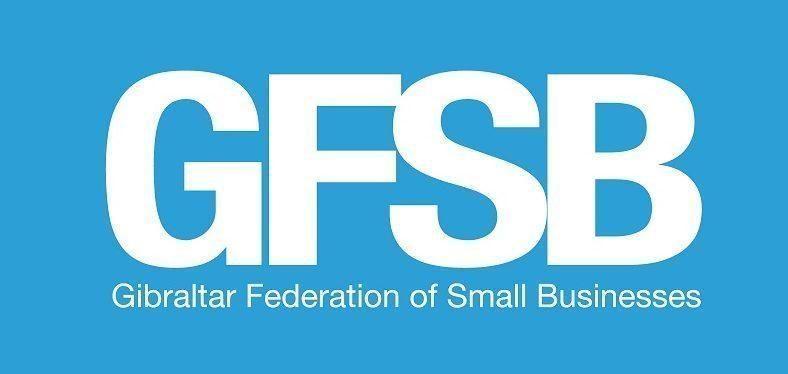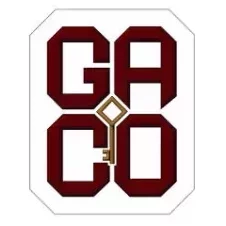INFORMATION ABOUT GIBRALTAR
An brief introduction to the history, culture & economy in Gibraltar.
Gibraltar is a British Overseas Territory with an area of 6.7 km2 located on the southern tip of Spain. The Rock of Gibraltar (426m high) dominates most of the landscape with the rest of the area being a densely populated town area, home to over 32,000 people, primarily Gibraltarians.
Gibraltar presently has a self-governing and self-financing parliamentary democracy. It is fully compliant with European standards of regulation, has a highly-diversified economy, is home to numerous international trading entities and is well known for its financial services, e-gaming, shipping and tourism.
The prosperous economic performance of Gibraltar has been reflected in ways that benefit the whole community, with considerable public spending on public provisions including health, education and social services. Gibraltar’s implementation of policies has created a stable environment which has contributed to rising levels of business activity and investor confidence.
Ancient history
Whilst there has been continued use of Gibraltar’s caves by Homo Sapiens, there is evidence of Neanderthal habitation in Gibraltar from around 50,000 years ago. Stone tools, ancient hearths and animal bones dating from around 40,000 years ago to about 5,000 years ago have been found in deposits left in Gorham’s Cave.
During ancient times, Gibraltar was regarded as a place of religious and symbolic importance.
Gibraltar was known as Mons Calpe, a name which was considered by the ancient Greeks and Romans as one of the Pillars of Hercules, after the Greek legend of the creation of the Strait of Gibraltar by Heracles.
The town of Carteia, near the location of the modern Spanish town of San Roque, was founded by the Phoenicians around 950 BC on the site of an early settlement of the native Turdetani people.
Middle Ages
After the collapse of the Western Roman Empire, Gibraltar came briefly under the control of the Vandals.
414 AD: The area formed part of the Visigothic Kingdom of Hispania for almost 300 years.
711 AD: Tariq ibn Ziyad crossed from North Africa and the expedition led to the Islamic conquest of most of the Iberian peninsula. Mons Calpe was renamed Jabal Ṭāriq “the Mount of Tariq”, now known as Gibraltar.
1160 AD: A permanent settlement, including a castle was built, named Medinat al-Fath (City of the Victory). The Tower of Homage of the Moorish Castle remains standing today.
The Town of Gibraltar remained in Moorish hands until 1462 but was fought over and captured a number of times.
Modern Era
1462 AD: Gibraltar was captured by Juan Alonso de Guzmán, 1st Duke of Medina Sidonia, from the Emirate of Granada.
1501 AD: Isabella I of Castile issued a Royal Warrant granting Gibraltar the coat of arms that it still uses today.
1704 AD: During the War of the Spanish Succession, a combined Anglo-Dutch fleet, representing the Grand Alliance, captured the town of Gibraltar on behalf of the Archduke Charles of Austria in his campaign to become King of Spain. Subsequently, most of the population left the town with many settling nearby.
1713 AD: The Treaty of Utrecht was negotiated, which ceded control of Gibraltar to Britain to secure Britain’s withdrawal from the war. Unsuccessful attempts by Spanish monarchs to regain Gibraltar were made with the siege of 1727 and again with the Great Siege of Gibraltar (1779 to 1783), during the American War of Independence.
1803: During the Napoleonic Wars Gibraltar became a key base for the Royal Navy and played an important role leading up to the Battle of Trafalgar (21 October 1805). Its strategic location made it a key base during the Crimean War of 1854–1856.
Gibraltar’s strategic value increased with the opening of the Suez Canal, as it lay on the sea route between the UK and the British Empire east of Suez. In the later 19th century, major investments were made to improve the fortifications and the port.
1969 AD: The Spanish Government sought to apply economic and diplomatic pressure, resulting in the closure of the frontier from 1969 to 1985. The people of Gibraltar refused to a change of sovereignty and confirmed their desire to preserve their links with the UK in the referenda held in both 1967 and 2002.
2006 AD: After a long process of negotiation between the Gibraltar and the UK Governments, a new constitution was granted to Gibraltar which provided a much higher degree of self-government while preserving British sovereignty. The UK remains fully responsible for Gibraltar’s external relations.
Today: Despite political differences, cross-border business and social relations are friendly and extensive, with circa 12,000 Spanish nationals working in Gibraltar and many Gibraltarians owning holiday homes in Spain.
Gibraltar’s culture reflects its diverse origins. Gibraltar is mainly influenced by Spain and Great Britain, however, as a result of the territory’s status and its proximity to Spain, the ethnic origins of most Gibraltarians are a mix of Andalusian Spaniards, Genoese, Maltese, Portuguese and British.
The main religion is Christianity, comprising mainly of Roman Catholics and the Church of England. There is also a long-established Sephardic Jewish community, a number of Hindu Indians and a Moroccan Muslim population.
The Rock now has about 32,000 inhabitants, of which 26,000 are native Gibraltarians, the balance being made up mainly of British expatriates.
English is the official language but most Gibraltarians speak and write both English and Spanish
Flight: Gibraltar has its own Airport and flies to the following destinations:
– Bristol
– Edinburgh
– London Gatwick
– London Heathrow
– London Luton
– Manchester
– Casablanca
– Tangier
Road: Separated with Spain by a Frontier, Gibraltar is accessible by road or pedestrian access.
Cruise/Boat: With the majority of Gibraltar surrounded by water, Gibraltar is also accessible by boat.
Other interesting facts about Gibraltar
• Location: South western tip of Europe by the Strait of Gibraltar at the entrance to the Mediterranean. Access by land, sea and air
• Time zone: GMT +1 winter, GMT+2 summer
• Official language: English, although Spanish is widely spoken.
• Status: Self-governing British Overseas Territory
• Climate: Around 300 days of sunshine a year, warm summers, mild winters
• Currency: £ sterling
• Law: Based and modelled on the British Legal system with a well-regulated jurisdiction
• Living: It is estimated that 70% of Gibraltar’s ~ 32,000 population live on reclaimed land, predominantly on the west side of Gibraltar.
• Jobs: Currently estimated to exceed 24,000 and is continuing to grow
• Cross-border workers: Around 12,000 cross-border workers cross the frontier into Gibraltar each working day
• Religion: Home to a wide variety of religions existing harmoniously
• Leader in DLT & Fintech business: A Regulatory framework in place
• Free from Serious Crime: Virtually free of serious crime
• Interest rates: Set by the Bank of England
• UK High street Brands & International Companies: Home to a large number of well-known UK high street brands and International Companies, for example: Costa Coffee, McDonalds, Burger King, NatWest Bank, Lloyds Bank, Newcastle Building Society, Top Shop, EY, KPMG, PwC, Delloite, Société General, GVC Group, and more.
• Tax System: Very favourable with no Inheritance Tax, no Capital Gains Tax, 10% Corporation Tax and modest personal tax rates.
• Infrastructure: Excellent road links to Europe and ferry service to Africa (Tangier-Med Port), British-European business hub, advanced fibre-optic communications, high resilience and very secure; First-class financial services
• Society: A high quality of life with mixed culture. An increasing amount of luxury and affordable property developments
• Economic State: Robust, vibrant economy
• Main Economic Sectors: Financial Services, Maritime Services, Tourism and E-Gaming
• Tourism: holiday hotspot, beach weather, ample history; various tourist sites; large, protected nature reserve, military history including an extensive tunnel network, abundance of flora and fauna, duty free shopping, restaurants and bars.
• Shipping: Commercial Port, Ship and Yacht Registry. One of the top bunkering ports in the world. Cruise Liner destination, quality Maritime Services, numerous Marinas.
Other related pages
Setting up a business in Gibraltar has a large number of advantages from attractive tax rates to…
An brief introduction to the history, culture & economy in Gibraltar…
Gibraltar left the European Union with the United Kingdom on 31st January 2020…




